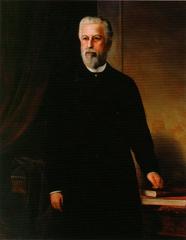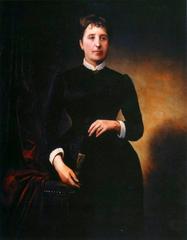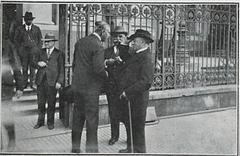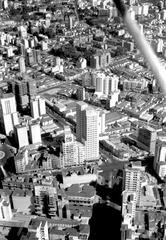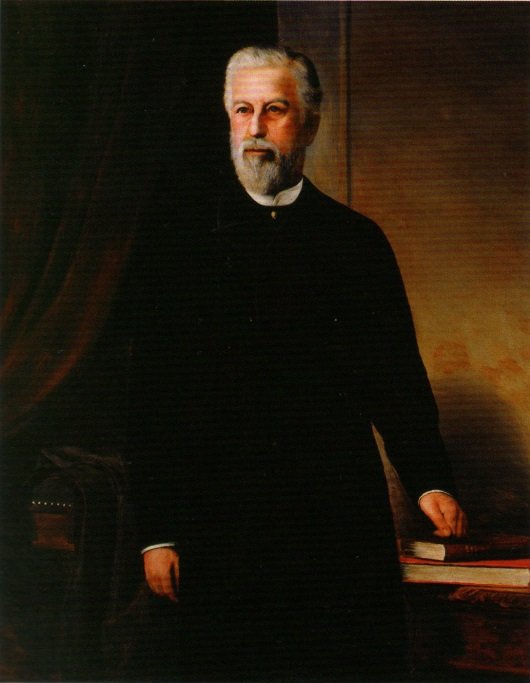
Irmandade da Santa Casa de Misericórdia de São Paulo: Visiting Hours, Tickets, and Historical Significance
Date: 14/06/2025
Introduction
The Irmandade da Santa Casa de Misericórdia de São Paulo is a foundational institution in the history and culture of São Paulo. Established in the 16th century, it has evolved from a modest hospital inspired by Portuguese charitable traditions into a sprawling medical complex and educational center. Today, it stands as both a monument to centuries of philanthropy and innovation and a vibrant, active hub for healthcare, education, and cultural heritage.
This guide provides an in-depth overview of the Santa Casa’s origins, architectural achievements, visitor information, and its enduring significance to the city. Whether you are a history enthusiast, a medical professional, or a curious traveler, this article will help you plan and enrich your visit.
(fcmsantacasasp.edu.br; santacasasp.org.br; portal.sescsp.org.br)
Table of Contents
- Origins and Historical Evolution
- Growth, Public Health, and Modernization
- Architectural and Cultural Heritage
- The Santa Casa Museum and Key Attractions
- Faculdade de Ciências Médicas: Education and Community
- Visitor Information: Hours, Tickets & Accessibility
- Special Events, Tours, and Community Engagement
- Practical Tips and Nearby Attractions
- Frequently Asked Questions (FAQ)
- References
Origins and Historical Evolution
Philanthropic Roots
The Santa Casa de Misericórdia tradition began in Portugal in 1498 with a mission to care for the poor, sick, orphans, and other vulnerable populations. This model, based on Catholic brotherhoods, quickly spread across the Portuguese Empire, including Brazil, providing essential social welfare services in the absence of state support. São Paulo’s Santa Casa, founded in the 16th century, became the city’s first hospital and social safety net, sustained by private charity, alms, dues, and property rents (encyclopedia.com).
Institutional Growth
As São Paulo grew from a colonial outpost to a major urban center, the Santa Casa adapted, expanding its services to meet mounting healthcare and social needs. Throughout the colonial and imperial periods, it was the main recourse for the sick and poor, also providing dowries, prison relief, and burial services (scielosp.org). The institution’s adaptability and commitment to public health cemented its role in the city’s development.
Growth, Public Health, and Modernization
Expansion and Medical Education
By the late 19th century, the Santa Casa had become a linchpin in São Paulo’s healthcare system. The iconic Hospital Central was completed in 1884, symbolizing modernization and the city’s growing population. In the same era, the Santa Casa established its own School of Medical Sciences, formalizing its contribution to medical education—a tradition that continues today through the Faculdade de Ciências Médicas da Santa Casa de São Paulo (FCMSCSP) (fcmsantacasasp.edu.br).
Contemporary Role
Currently, the Santa Casa operates as a private, philanthropic, non-profit organization. It includes multiple hospitals and health units, treating over 8,000 people daily and providing more than 1,200 beds. Its emergency and complex medical services are benchmarks for the region, and its affiliated medical school is among Brazil’s most respected (fcmsantacasasp.edu.br).
Architectural and Cultural Heritage
Hospital Central: A Gothic Revival Landmark
The Hospital Central is a masterpiece of late 19th-century hospital architecture. Designed by Italian architect Luigi Pucci, it features a striking Gothic Revival style—rare for Brazilian hospitals—marked by pointed arches, ribbed vaults, brickwork, and stone columns. Inaugurated in 1884, its layout prioritized ventilation and sunlight, reflecting contemporary medical theories and public health needs (portal.sescsp.org.br; arquitalianasaopaulo.iau.usp.br).
The hospital’s location in Vila Buarque, near the city center, was chosen for accessibility and visibility, ensuring the institution’s integration with São Paulo’s urban and social life.
Capela Nossa Senhora da Misericórdia
Built between 1900 and 1901, this neo-Gothic chapel is a spiritual centerpiece of the complex, seating up to 180 people and adorned with sacred art and paintings of saints. It remains a venue for worship, weddings, baptisms, and other liturgical ceremonies, reflecting the Santa Casa’s enduring religious and cultural foundations (viajantesemfim.com.br).
Salão Nobre
The Salão Nobre (Noble Hall) is a grand ceremonial space used for meetings, celebrations, and institutional events, decorated with period furnishings and historical portraits.
The Santa Casa Museum and Key Attractions
Museu da Santa Casa
Inaugurated in 2001, the museum preserves and showcases the history of the Santa Casa and the evolution of medicine in São Paulo. It houses over 7,000 artifacts across 12 rooms, including:
- Medical Instruments and Devices: Chronicling centuries of technological change.
- Historical Documents: Manuscripts, records, correspondence, and honors.
- Sacred Art and Portraits: Paintings, sculptures, and period furniture.
- Roda dos Expostos: Exhibits on the “foundling wheel,” once used for anonymous infant abandonment.
The museum is located within the Hospital Central and is an essential stop for anyone interested in medical history, art, or philanthropy (santacasasp.org.br).
Faculdade de Ciências Médicas: Education and Community
Founded in 1963, the Faculdade de Ciências Médicas da Santa Casa de São Paulo (FCMSCSP) is a top-ranked medical school integrated with the hospital. Students gain hands-on clinical experience from their first year, and the faculty’s excellence has been recognized with the highest national ratings. The Santa Casa regularly hosts medical conferences, art exhibitions, and public health initiatives, strengthening its role as a center of learning and community engagement (fcmsantacasasp.edu.br).
Visitor Information: Hours, Tickets & Accessibility
General Visitor Information
- Complex & Museum Hours: Monday to Friday, 9:00 AM – 4:30 PM. The hospital itself operates 24/7, but visitor access is limited to public areas, museum, and chapel during these hours.
- Admission: Entry to the complex, chapel, and museum is free. Guided tours and special exhibitions may require advance booking or a nominal fee.
- Location: Rua Dr. Cesário Mota Júnior, 112, Vila Buarque, São Paulo, SP, CEP 01221-020 (santacasasp.org.br).
- Contact: +55 (11) 2176-7000; Museum inquiries: [email protected]
- Accessibility: Main areas are wheelchair accessible; some historic sections may have limited access. Contact ahead for special accommodations.
Getting There
- By Metro: Santa Cecília (Line 3 – Red) and República stations are nearby.
- By Car/Taxi: Limited parking available; ride-sharing is recommended (Travel Like a Boss).
Special Events, Tours, and Community Engagement
- Guided Tours: Available for groups, schools, and individuals by appointment. Tours cover the hospital’s history, architecture, and museum collections.
- Events: The Santa Casa hosts medical symposiums, art exhibitions, and public health campaigns. Check the official website for the latest schedule (fcmsantacasasp.edu.br).
- Philanthropy: The Santa Casa welcomes volunteers and donations. For more information, contact [email protected] or +55 11 2176-7026 (ongsbrasil.com.br).
Practical Tips and Nearby Attractions
- Photography: Allowed in exterior and museum areas (no flash/tripods); prohibited in patient care zones.
- Dress Code: Modest attire is appreciated due to the site’s spiritual and historical significance.
- Safety: Use reputable transportation, especially after dark. Stay alert in busy areas (Lonely Planet).
- Dining: Cafeterias and snack bars are available on-site. Many restaurants and bakeries are nearby (São Paulo City Info).
Nearby Attractions
- Praça da República: Historic square with gardens and weekend markets.
- Museu de Arte Sacra: Religious art and artifacts.
- Pinacoteca de São Paulo, Municipal Theater, and Avenida Paulista: Highlights of São Paulo’s cultural scene (planetware.com).
Frequently Asked Questions (FAQ)
Q: What are the visiting hours?
A: Monday to Friday, 9:00 AM to 4:30 PM for public areas and the museum. Check the website for updates.
Q: Is there an admission fee?
A: Entry to the complex, chapel, and museum is free. Special events or tours may require booking or a small fee.
Q: Are guided tours available in English?
A: Yes, with prior arrangement (santacasasp.org.br).
Q: Is the site accessible for visitors with disabilities?
A: Most areas are accessible; contact administration for specific needs.
Q: Can I attend religious ceremonies?
A: The chapel is active and hosts religious ceremonies, including weddings and baptisms.
Q: How do I get there by public transport?
A: The closest metro station is Santa Cecília (Line 3 – Red), a short walk from the complex.
References
- Misericórdia Santa Casa da, Encyclopedia.com
- Faculdade de Ciências Médicas da Santa Casa de São Paulo, Official Website
- Santa Casa de Misericórdia de São Paulo - Architectural Overview, Portal SESC SP
- Santa Casa de Misericórdia de São Paulo - Architecture and History, ArquItalianas São Paulo
- Santa Casa de Misericórdia de São Paulo Visitor Guide, Viajante Sem Fim
- Santa Casa Museum, Official Site
- Santa Casa de Misericórdia de São Paulo - Hospital Central, Official Site
- Safety and Travel Tips for São Paulo, Travel Like a Boss
- São Paulo Historical Sites, PlanetWare
- Encontra São Paulo
- ONGs Brasil
- Lonely Planet
- São Paulo City Info
Conclusion
The Irmandade da Santa Casa de Misericórdia de São Paulo is an enduring symbol of São Paulo’s compassion, innovation, and cultural depth. Its Gothic Revival architecture, active spiritual spaces, rich museum collections, and ongoing educational mission make it a must-visit destination. Whether you seek historical insight, inspiration from medical achievements, or a tranquil space amid the city’s bustle, the Santa Casa welcomes all.
For up-to-date information, guided tour reservations, and event schedules, visit the official website and consider downloading the Audiala app. Make your visit memorable and deepen your understanding of São Paulo’s vibrant heritage.
